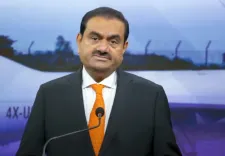How is PM Modi’s Gujarat Model Inspiring Water Conservation in MP?

Synopsis
Key Takeaways
- Madhya Pradesh is implementing water conservation initiatives inspired by Gujarat's successful model.
- The 'Jal Ganga Sanvardhan Abhiyan' focuses on reviving ancient water bodies.
- Advanced software is being used to identify suitable conservation sites.
- Khandwa district has gained recognition for its groundwater conservation efforts.
- The state is committed to improving rural livelihoods through these initiatives.
New Delhi, June 24 (NationPress) The Chief Minister of Madhya Pradesh, Mohan Yadav, met with Prime Minister Narendra Modi in New Delhi to discuss the state’s innovative water conservation initiatives, which are heavily influenced by Gujarat’s successful approach.
After the meeting on Monday, CM Yadav stated that the Prime Minister’s achievements in revitalizing traditional water systems in Gujarat serve as a blueprint for Madhya Pradesh’s undertakings. CM Yadav extended an invitation to the Prime Minister to conclude the ‘Jal Ganga Sanvardhan Abhiyan,’ a statewide initiative focused on conserving water resources and enhancing groundwater recharge. This campaign, set to conclude on June 30, aims to revive ancient water bodies and construct new ones utilizing scientific planning tools.
“We have invited the Prime Minister to either participate virtually or in person for the campaign's conclusion, and he has graciously accepted,” Dr. Yadav mentioned.
Launched in March, the campaign has seen the state government undertake a comprehensive effort to restore old wells, stepwells, riverbanks, and other traditional water structures. This initiative falls under the ‘Jal Ganga Sanvardhan Abhiyan’, which is aimed at conserving water resources and improving groundwater recharge.
Madhya Pradesh has made history by becoming the first state in India to implement advanced software such as SIPRI (Software for Identification and Planning of Rural Infrastructure) and PLANER to identify suitable sites for water conservation projects. These tools, developed in collaboration with ISRO and MPSEDC (Madhya Pradesh State Electronics Development Corporation), have enabled precise planning and execution of projects at the gram panchayat level, according to CM Yadav.
Khandwa district has received special recognition as a leader in groundwater conservation efforts among all districts nationwide.
A significant achievement of the campaign has been the revival of the Ghoda Pachhad River in Khandwa district. Once dry due to excessive groundwater extraction, the river now flows again thanks to the conservation structures built along a 33-kilometre stretch.
The state has also garnered recognition as one of four states in the country where substantial work has been accomplished regarding water bodies, according to the Chief Minister.
Parallel initiatives across the state include the construction of farm ponds, Amrit Sarovars, and recharge wells, all of which have improved irrigation and rural livelihoods.
The Madhya Pradesh Pollution Control Board has conducted surveys of major rivers like the Narmada, Chambal, and Shipra, identifying pollution sources and promoting the installation of sewage treatment plants to mitigate contamination.
Furthermore, the number of Ramsar-designated wetlands in the state has increased from one in 2002 to five by 2025, with Indore being recognized as India's first Wetland City.
CM Yadav stressed that these initiatives are not merely about infrastructure but are crucial for securing the future of rural communities and maintaining ecological balance.






